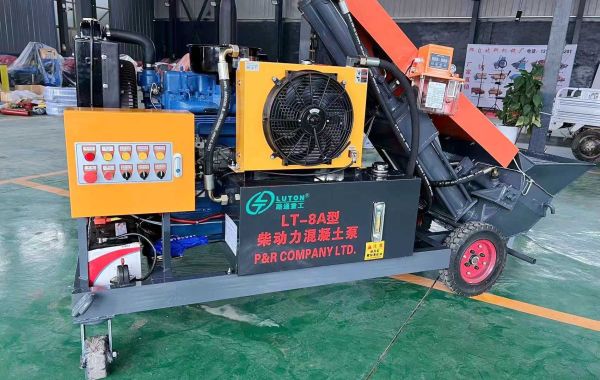Introduction
In the modern construction industry, the importance of secondary construction pumps as important equipment for concrete construction is self-evident. It provides strong support for various construction projects with its efficient and convenient characteristics. This article will provide a detailed introduction to the purpose, composition, usage methods, as well as the types, distances, and heights of concrete that can be pumped by the secondary construction pump.
The Purpose of Secondary Construction Pumps
Secondary construction pumps are mainly used for concrete conveying in high-rise buildings, bridges, tunnels, and other engineering projects. It can directly transport concrete from the mixing plant to the construction site, greatly reducing manual handling time and labor intensity, and improving construction efficiency. Meanwhile, the secondary construction pump can also adapt to various complex construction environments, ensuring the continuity and stability of concrete transportation.
Composition of Secondary Construction Pump
The secondary construction pump mainly consists of pump body, conveying pipeline, hydraulic system, electrical control system, and other parts. The pump body is the core component of concrete conveying, with rotating pistons and valves inside. It is driven by a hydraulic system to achieve the suction and discharge of concrete. The conveying pipeline is responsible for transporting concrete from the pump body to the construction site, and its material is usually wear-resistant and pressure resistant steel pipe or rubber pipe. The hydraulic system and electrical control system are responsible for controlling the operation of the pump body and the entire system.
Usage of Secondary Construction Pump
Installation-Place the secondary construction pump on a flat and stable ground, connect the conveying pipeline and electrical control system.
Debugging-Start the electrical control system, check the working pressure of the hydraulic system and the operation of the pump body to ensure everything is normal.
Feeding-Pour the mixed concrete into the feeding port of the pump body, start the pump body, and start conveying the concrete.
Monitoring-During the transportation process, it is necessary to constantly monitor the pressure and flow rate of concrete to ensure the stability and continuity of transportation.
Cleaning-After the construction is completed, the pump body and delivery pipeline should be cleaned in a timely manner to prevent residual concrete from affecting the next use.
The Pumping Capacity of Secondary Construction Pumps
Concrete type
The secondary construction pump can pump various grades of concrete, including ordinary concrete, high-performance concrete, lightweight concrete, etc. However, it should be noted that for concrete containing a large amount of aggregates or fibers, it may be necessary to adjust the pump parameters or use special conveying pipelines.
Delivery distance and height
The delivery distance and height of a secondary construction pump depend on its model and power. Generally speaking, large, high-power secondary construction pumps can transport longer distances and higher heights. In actual construction, it is necessary to choose a suitable secondary construction pump based on specific engineering requirements and construction environment.
More details on concrete pumping machinery are available on the website lutonmachinery.com.
Conclusion
As an indispensable construction equipment in the modern construction industry, secondary construction pumps provide strong support for various construction projects due to their efficient and convenient characteristics. Through the introduction of this article, it is believed that readers have a deeper understanding of the purpose, composition, usage methods, as well as the types, distances, and heights of concrete that can be pumped by secondary construction pumps. In actual construction, we need to select suitable secondary construction pumps based on specific engineering requirements and construction environment, and strictly operate and maintain equipment according to the usage methods to ensure efficient and safe construction.








